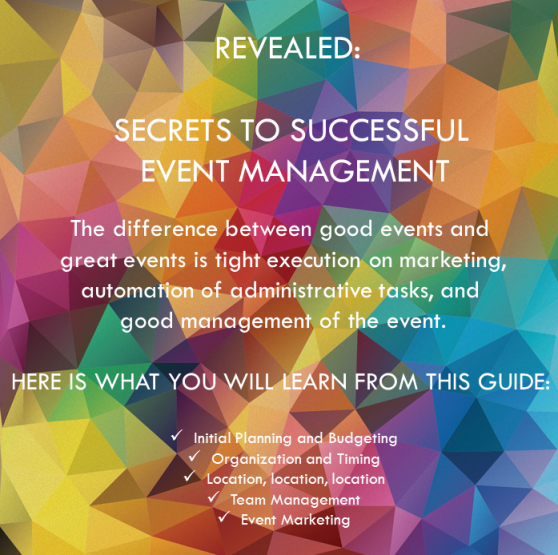 |
| The new Apple Watch photo courtesy of Apple |
Apple staged one if its most buzzed-over product announcements in years, and several of the new products and features unveiled are likely to impact the world of live events and experiences. Here’s a look.
The New Products
Apple introduced two new smartphones, both with larger screens than their predecessors: The iPhone 6 has a 4.7-inch screen, and the iPhone 6 Plus has a 5.5-inch screen.
But the big news was Apple’s entry into wearable technology, the Apple Watch. While it looks more like an actual watch than many predicted—with a square face and several styles of bands—it incorporates new design ideas like a “digital crown” twisting control that scrolls through app functions. It requires an iPhone and will go on sale in 2015.
Near-Field Communication
Both the iPhone 6 and the Apple Watch will include near-field communication (N.F.C.) technology, which may have the most immediate and obvious impact on live events.
N.F.C. allows the devices to send information to other devices a few inches away. It’s one type of radio frequency identification (R.F.I.D.), which events have already been using for security, credentialing, guest tracking, polling, and sponsor integration. This has happened mostly with wearables (wristbands, lanyards) made specifically for the event.
Apple C.E.O. Tim Cook focused mostly on how N.F.C. will facilitate Apple Pay, which will let users make credit card transactions by waving their phone at a point-of-sale device. (Retailers like Macy’s and Walgreens are already signed on.) But this has potential for many, many other uses. Through a partnership with Starwood, all W hotels will allow guests to use an N.F.C.-enabled iPhone 6 (and presumably an Apple Watch) as their room key by spring 2015.
“While Apple talked about payments specifically, we see this technology as an enabler for many other conference-specific transactions, such as lead scanning, session check-ins, exchanging contact information, and more,” emails Tim Isganitis, the lead iOS developer at event app company DoubleDutch. “Some Android devices already have N.F.C., so this has the potential to be ubiquitous in the not-too-far future.”
Fumble-Free Information
You may already feel like your phone is an extension of your arm (or your brain), but presumably you sometimes put it in your pocket. A watch keeps alerts and information even closer to view. “It’s going to change everything,” says John Federico, co-founder of event software company EventHero. “The fumbling with your device is suddenly gone.”
Widespread N.F.C. usage could also speed up registration and ticketing, or potentially any event interaction where information needs to be exchanged.
New Messaging Opportunities
“The new Apple Watch will offer event apps the ability to present quick, contextual information (like session reminders) without requiring users to take out their phone and open the app,” Isganitis says.
That could include a buzzing reminder when a bookmarked session is about to begin, a notification when another attendee with similar interests is nearby, or a welcome message from an exhibitor when you enter the conference hall.
The Second (and Third, and Fourth) Screen
We already see conference attendees using phones, tablets, and laptops to take notes or watch presentation slides. Watch screens may be used to share session information as well. The Apple Watch presentation included a demo of a text messaging feature that offers wearers pretyped responses to a question from a friend. This type of quick-tap questions could inspire audience polling to move to wearables as well.
Smart watch adoption would also mean what’s happening in the room has one more thing to compete with. Event hosts have to ask, is what’s happening at the event more interesting than whatever’s buzzing on guests’ wrists?
Better Positioning
“The new M8 motion chip [in the iPhone 6], along with other improvements in iOS 8, will improve indoor positioning at Apple-supported venues,” Isganitis says. “We expect many major conference venues will gain this support, which will help event apps, like the ones we build at DoubleDutch, to do a better job of telling attendees where they are, and how to get where they need to be.”
That Bothersome Bandwidth Issue
If lots of attendees start showing up with smart watches in addition to their smart phones, tablets, and laptops, that’s one more device sucking data from a venue’s Internet connection. And bandwidth is already one of event planners’ biggest technology complaints.
Some Less-Inspiring Notes
On the day of its biggest product announcement in years, the company considered by many to be the most innovative in the world—a company known for creating groundbreaking, easy-to-use technology products—put a webcast on its homepage that went down regularly for at least the first half of the event. And when it worked, in addition to Apple’s all-male lineup of presenters on stage, for a considerable amount of time the soundtrack also included a female voice delivering what was presumably the Chinese translation. (The gender issue did not go unnoticed on Twitter.)
Source: Chad Kaydo for BizBash




0 comments:
Post a Comment